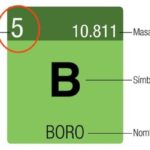We explain the history of the periodic table, what its first version was like and how it was used to discover chemical elements.

What is the history of the Periodic Table?
The Periodic Table is a graphic and conceptual tool that organizes all the chemical elements known to humanity according to their atomic number (that is, the number of protons in their atomic nucleus) and their other essential chemical properties.
The first version of this conceptual model was published in 1869 in Germany by the Russian chemist Dimitri Mendeleev (1834-1907), who had discovered the existence of a recognizable pattern between elements, useful for classifying and organizing them graphically. Its name came from Mendeleev's hypothesis that atomic weight determined the periodic properties of the elements.
The first periodic table arranged the 63 discovered elements in six columns by then, and was universally accepted and celebrated by scholars of the subject. It was considered a notable improvement on the first attempts to systematize the elements, proposed by Antoine Lavoisier, or the first tables created by André-Emile Béguyer de Chancourtois (a “telluric helix”) in 1862, and Julius Lothar Meyer in 1864.
In addition to creating the Periodic Table, Mendeleev used it as a tool to deduce the necessary existence of elements not yet discovered a prediction that was later fulfilled when many of the elements that filled the blank spaces in his table began to be discovered.
However, since then the Periodic Table has been reconceived and reformulated several times, expanding on subsequently discovered or synthesized atoms. Mendeleev himself created a second version in 1871. The current structure was designed by Swiss chemist Alfred Werner (1866-1919) from the original table, and the standard graphic arrangement is attributed to the American chemist Horace Groves Deming.
A new version of the table was presented by the Costa Rican Gil Chaverri (1921-2005) taking into account the electronic structure of the elements, instead of their number of protons. However, the acceptance of the traditional version today is absolute.
Continue with: Groups of the periodic table
References
- “Periodic table of the elements” on Wikipedia.
- “Mendeleev and the origin of the periodic table” (video) at UBUinvestiga.
- “History of the periodic table” at the Complutense University of Madrid (Spain).
- “The periodic table turns 150 years old” in National Geographic Spanish.
- “Periodic table (chemistry)” in The Encyclopaedia Britannica.





